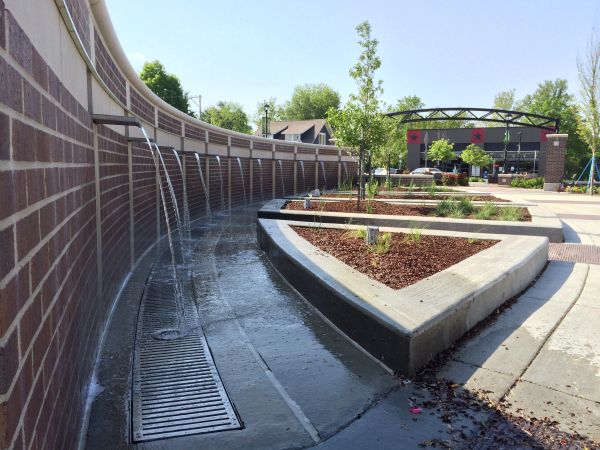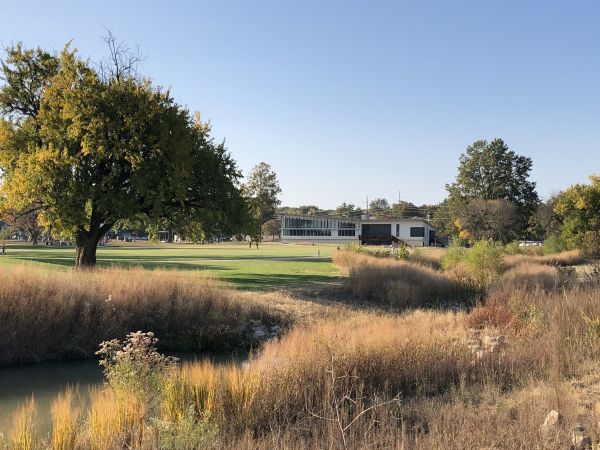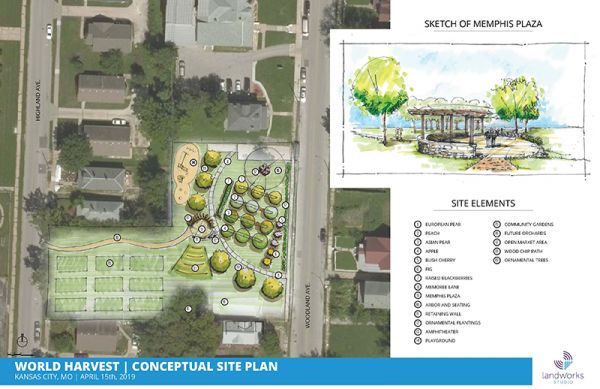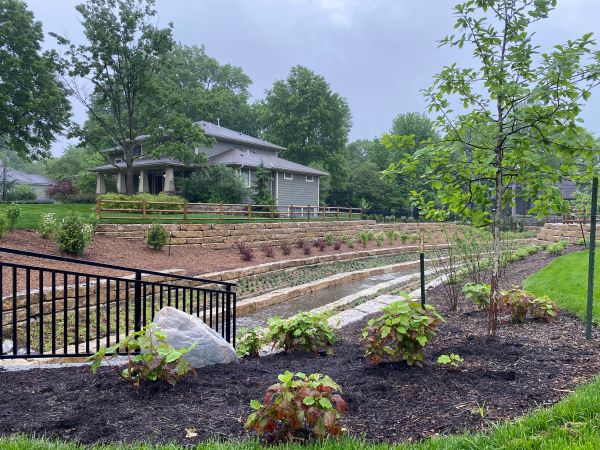that matter to you
Let’s Talk Landscape Architecture: What It Is, Why It Matters, How It Benefits Society
Category: News and Updates
Date: July 28, 2020
Last month, Landworks Studio delivered a presentation to the Kansas City Chapter of the American Planning Association (KCAPA). We’ve included below a brief recap of the contents of this hour-long presentation.
What is landscape architecture?
In short, we handle the design of everything outside. If it's not an inhabitable building, we are happy to design it. In America, we trace our professional lineage back to Frederick Law Olmsted, commonly thought of as the designer of Central Park. Olmsted's local contemporary was George Edward Kessler who is credited with conceiving of and designing Kansas City's iconic boulevard system. He rose to prominence during the City Beautiful Movement at the turn of the last century. The modern Environmental Movement of the 1960s and 70s was another period of immense growth in our field. Today landscape architects work on projects ranging from the design of complete streets and green infrastructure to the master planning of college campuses and public park systems.
Why does landscape architecture matter?
We help to design the spaces that link our communities together: the streets, trails, green spaces, parks, and even the parking lots. Our ability to design interstitial spaces combined with a stout environmental ethic makes us passionate agents for healthier communities. Whether we are working in the private or public sector, we are working to enact solutions to some of the great issues facing our planet today:
- Providing open spaces for all
- Increasing urban wildlife habitat and biodiversity
- Improving food security
- Improving soil and stormwater quality
- Increasing flood and climate resilience
How do landscape architects apply their knowledge to benefit society?
Our profession applies its knowledge and skills to a vast array of projects within our communities. We chose four areas of expertise to discuss based on specific case studies.
Regenerative Park Design
- We focused on the case study of Railroad Park in Birmingham, Alabama wherein a public/private partnership between the City, multiple railroads, and a private foundation transformed a vacant railyard into a 19-acre park
- Among the many economic, social, and environmental benefits generated, the park sequesters approx. 20,000 lbs. of carbon annually, intercepts 92,000 gallons of rainwater annually, provides recreation amenities for every age group, and increases access to green space
- It was recognized with the ULI Open Space Award in 2012.
- With a plethora of railyards, could such a park development work in Kansas City?
Urban Farming
- The Kansas City Metro area, like many American cities, harbors multiple food deserts.
- We are blessed with numerous organizations combating food insecurity through urban farming such as Kansas City Community Gardens, Cultivate KC, and the Urban Farming Guys.
- The 2010 KCMO Urban Agriculture Ordinance helped restructure zoning ordinances to make productive urban farming a reality. Other communities such as Lawrence and the Unified Government of Wyandotte County and Kansas City, Kansas have made similar strides.
- Landworks Studio has contributed to the urban farming movement through multiple pro bono projects with The Giving Grove, a not-for-profit organization that promotes community orchards. Through thoughtful planning and design, we’ve helped to create orchards and gardens within school, park, and church properties across Kansas City.
Landscape Code-Compliancy
- We focused on commercial planting designs we’ve recently completed in both Kansas City, Missouri, and Olathe, Kansas to compare the landscape zoning requirements in both cities and discuss how zoning codes impact the health of local landscapes.
- Both cities require a planting plan sealed by a professional landscape architect as part of permit review. Both cities also require the landscape architect to provide a sealed affidavit of completion following construction and before a certificate of occupancy is granted.
- The Olathe requirements are more stringent than those of Kansas City. Olathe codes focus on all aspects of site landscape development from plantings around street frontages to a building’s façade. While the code requires a diverse plant palette and healthy-sized plant material, it could do more to promote native and horticulturally appropriate plant species.
- The KCMO requirements hit all the typical areas you see in a landscape ordinance but aren’t as rigorous as those in other metro communities when it comes to buffers between different land uses and interior parking lot landscaping. They also fail to promote native plant material.
Stormwater Management
- We focused on the landscape design we provided for the recently completed stormwater improvements between Delmar Lane and Fontana Street in Prairie Village, Kansas.
- A combination of urban sprawl, underdeveloped stormwater infrastructure, and climate change have made the mitigation of stormwater runoff a constant and expensive challenge for many American cities.
- Typical engineered solutions include bioswales, rain gardens, dry detention basins, and constructed wetlands.
- The Town and Country Estates subdivision in Prairie Village features undersized concrete flumes, low water crossings on public streets, and multiple residential properties in the floodplain.
- We helped devise a solution that replaced flumes with open bottom channels and vegetated flood benches, replaced low water crossings with culverts, increased runoff storage, reduced velocity, lowered the 100-year flood elevation, and tied the project into residential landscapes.
- Suburbs across the Kansas City Metro have similar stormwater problems. This is one of many solutions that could be applied to help achieve climate resiliency.



